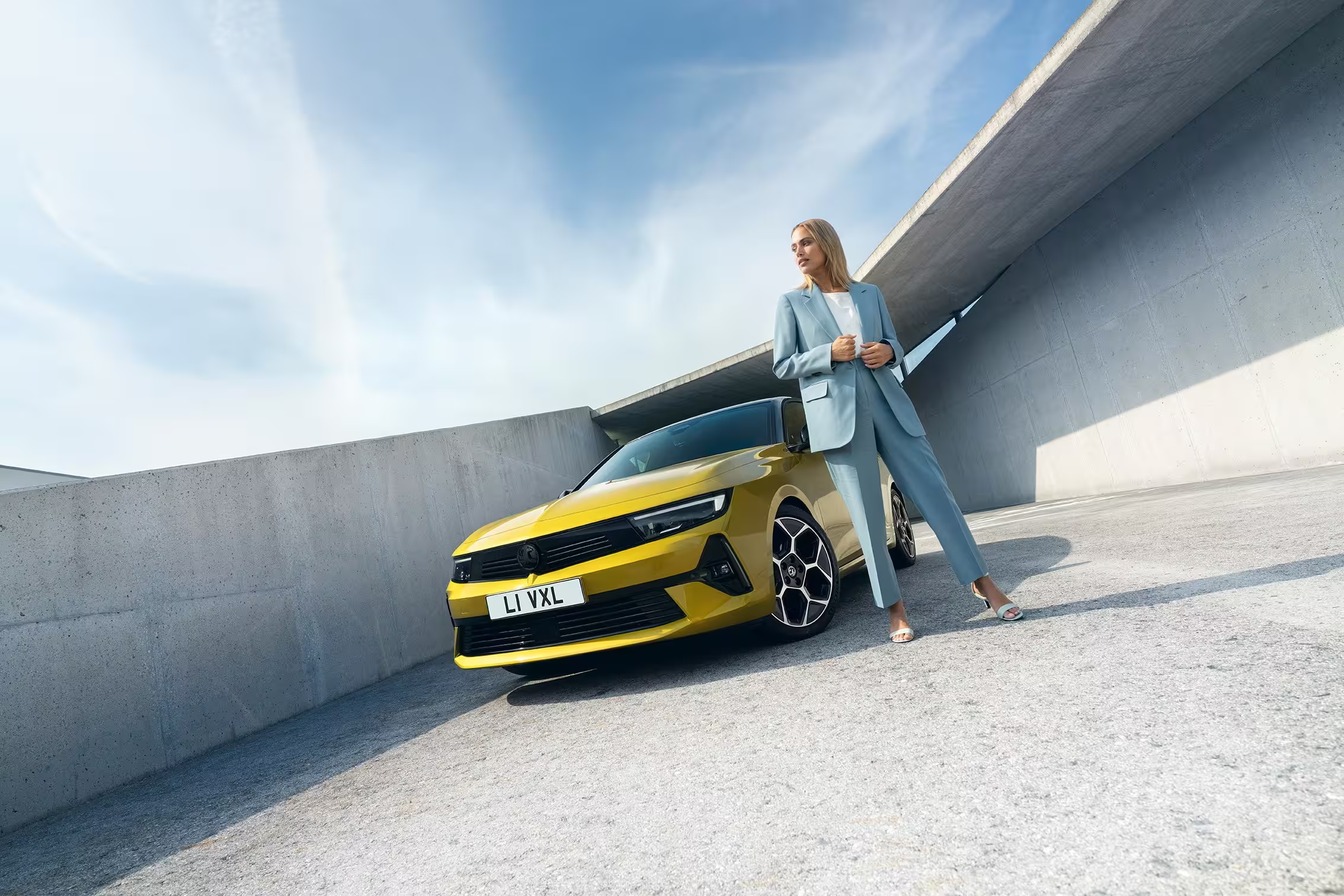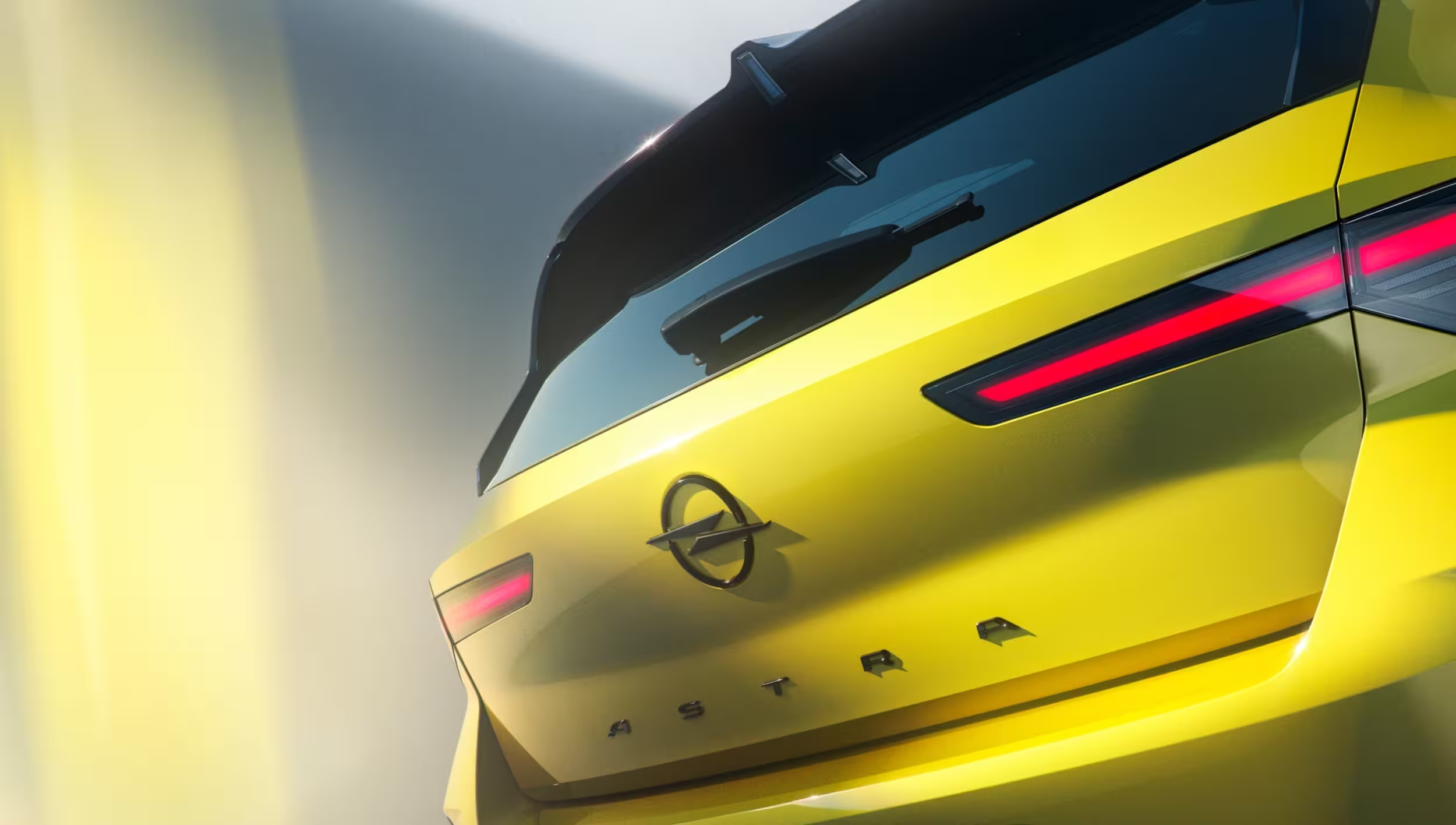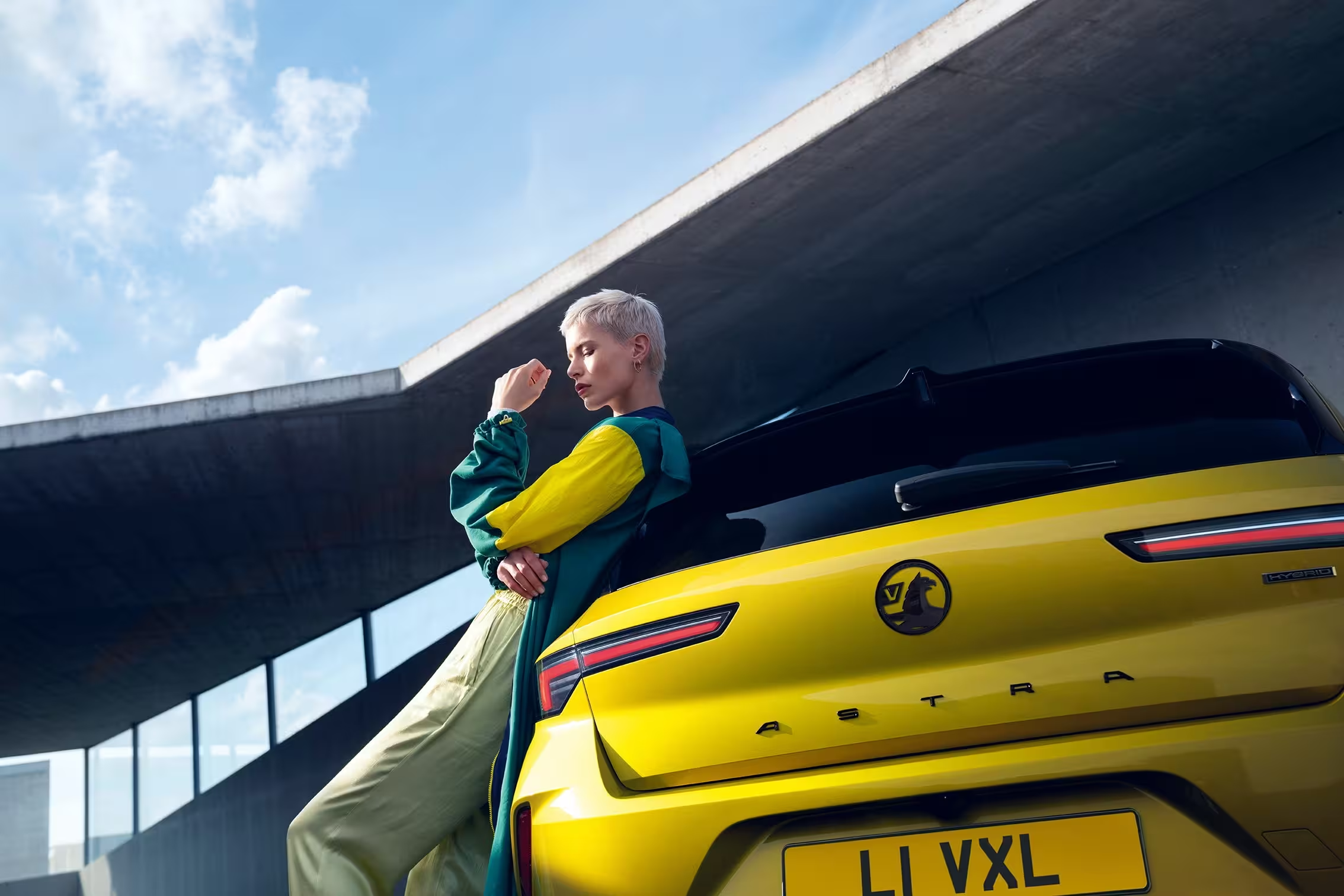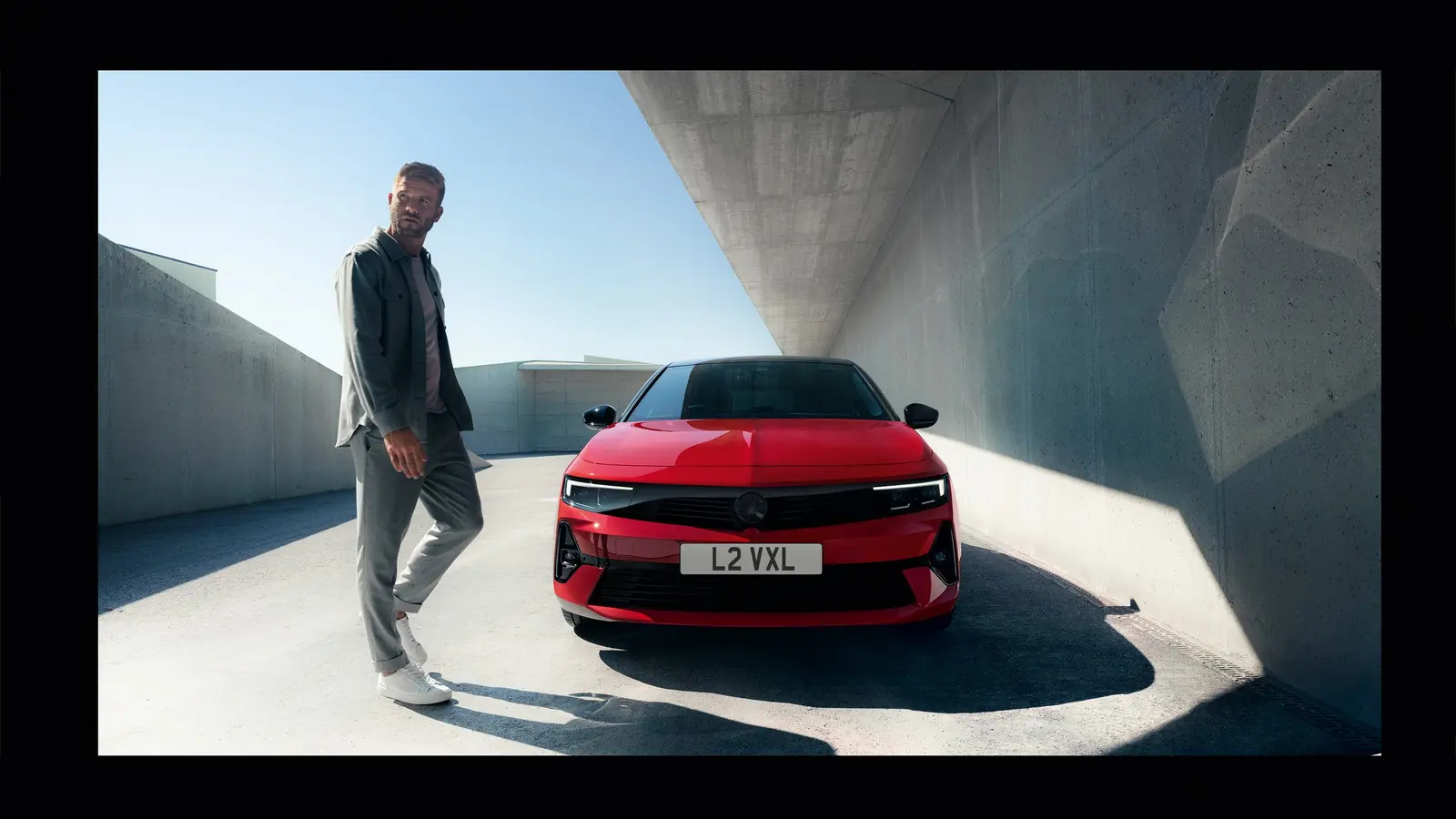5 Minutes
The compact Opel Astra is gearing up for a 2026 mid-cycle refresh that blends sharper visuals with clearer electrification choices. Opel's latest styling cues — the illuminated Vizor grille and a glowing Blitz emblem — bring the hatchback in line with the brand's current design language, while upgrades inside and under the skin sharpen its appeal in a crowded European segment.
Bold front end and subtle rear updates
Opel has adopted the Vizor motif introduced on the Corsa GSE Vision Gran Turismo concept, now applied to the Astra with an illuminated Blitz badge at center. The refreshed nose features larger bumper intakes and new bi-tone alloy wheels with a triple double-spoke design — small but purposeful changes that modernize the profile without a full redesign. The estate (wagon) variant follows the same visual theme, while the rear appears largely unchanged from the outgoing model.
Brighter cockpit: bigger screens and smarter safety
Inside, the Astra moves closer to the Grandland crossover with larger screens for the instrument cluster and infotainment. Expect upgraded ADAS (Advanced Driver Assistance Systems) and more interior trim choices. These upgrades aren't just cosmetic: improved displays enable more intuitive human-machine interfaces, while advanced radar, camera, and sensor fusion improve lane-keeping, adaptive cruise, and automated emergency braking performance.

Why the tech matters
Clearer information and better ADAS calibration reduce driver workload and improve safety margins. For buyers accustomed to smartphone-like interfaces, these changes make the Astra feel more contemporary and competitive against rivals such as the Volkswagen Golf.
Powertrains, efficiency and emissions context
Opel will offer a range of Euro 7-compliant powertrains: conventional gasoline engines, a mild-hybrid option, plug-in hybrids (PHEVs), and a fully electric variant. Euro 7 rules emphasize lower pollutant emissions and tighter real-world testing, which is driving manufacturers to refine combustion engines and accelerate electrification.

The 1.5-liter DV5 turbo diesel currently produces 129 horsepower and 221 lb-ft (300 Nm) of torque; however, declining diesel demand in Europe means this unit could be at risk during the refresh. The three-cylinder 1.2-liter PureTech engine comes in 109 or 128 hp non-electrified trims, while a 48-volt mild-hybrid version with variable geometry turbocharging raises output to 134 hp and 170 lb-ft (230 Nm) and achieves a WLTP-rated 5.0 L/100 km (about 47 mpg).
Electrified alternatives
PHEV buyers will notice a larger 17.2‑kWh high-voltage battery (up from 12.4 kWh) and a dual-clutch electrified transaxle. The standard PHEV delivers 193 hp and up to 83 km (52 miles) of electric range under optimal conditions, sprinting to 100 km/h (62 mph) in 7.6 seconds. The sportier Astra GSe increases combined output to 222 hp with roughly 80 km (50 miles) of electric range and firmer chassis tuning, including frequency-selective damping.

The fully electric Astra remains the most efficient zero-emission choice, using a 154 hp front-mounted motor. It’s targeted at buyers who prioritize low tailpipe emissions, though its range and charging performance are modest compared with some newer EVs. Pricing starts from €41,990 in Germany and £34,945 on-the-road in the UK under the Vauxhall badge.
Market positioning and what to expect
With competitors continually improving efficiency and digital features, Opel’s approach mixes distinctive styling with pragmatic electrification. The illuminated Vizor is a visual headline, but the real story for many buyers will be WLTP economy figures, Euro 7 compliance, and the balance between all-electric usability and hybrid range flexibility.

For drivers weighing fuel economy against upfront cost: diesel still offers strong real-world consumption (around 4.4 L/100 km or 53 mpg for some trims), while the PHEV and EV options appeal to city-oriented users who can exploit electric range for daily commuting.
Source: autoevolution


Leave a Comment